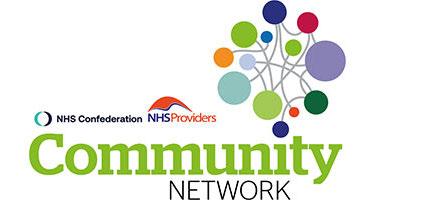What will the community sector’s piece of the Spending Review pie be?

In this blog series from the Community Network, leaders from across the community sector and beyond will be outlining how they are helping the health and care system respond to the big challenges ahead.
Here, Andrew Ridley stresses that while the extra funding recently announced for the NHS is welcome, community health services must not be overlooked as pressures continue to rise.
Remember community services in capital allocations
We will now need to see that investment filter down to community providers
Funding for NHS buildings, equipment and digital technology would have been near the top of most community providers’ wish lists and the £5.9 billion over the next three years announced by the Chancellor is most welcome.
We will now need to see that investment filter down to community providers, who are too often overlooked in national capital allocations. Historically, there has been little national support, prioritisation or targeted funding for digital transformation in the community sector, and non-NHS providers, such as community interest companies, have generally been excluded from accessing central capital funding.
We have seen great strides in digital improvement made by community providers despite these constraints, such as my own trust’s digital patient engagement tool or Tameside and Glossop’s digital health service treating older people in their care homes where appropriate. Yet there are still some significant variations in the digital maturity of community providers, meaning that targeted capital funding is required to address these historic inequities.
There is no doubt that other parts of the system need capital investment but the time has come to see this replicated for community health services so they can adapt to the ongoing impact of COVID-19 and achieve the transformation envisaged in the NHS Long Term Plan.
Growing the community workforce
You simply cannot deliver new or improved services in the community without the right number of staff
The key omission of the Spending Review was clarity around workforce planning. We are still awaiting, with hope, the publication of Health Education England’s budgets for next year and beyond, which cover education and training.
If we are to make the most of other investment, then we need to shift more care and resource downstream into the community. But to do this we need a proper, fully-funded workforce plan. You simply cannot deliver new or improved services in the community without the right number of staff. As it stands, that is a significant problem.
We saw a 12 per cent fall in the number of community nurses between 2010 and 2020 and the number of NHS health visitor posts fell by a third between 2015 and 2019. These workforce pressures have been exacerbated by the pandemic. That’s why we need to see further investment in the existing community workforce and an increase to the overall Health Education England budget, with targeted allocations for community roles.
Much-needed public health funding
Elsewhere in the Spending Review, we saw some investment in local authorities, but not enough to reverse years of funding cuts. The Spending Review failed to deliver a real-terms increase to the public health grant, which has shrunk by 24 per cent in real terms since 2015/16. This has meant reduced access to key public health services delivered by community providers, such as sexual health and smoking cessation, while demand has grown and inequalities have widened. There was nothing in the Chancellor’s announcement to reverse this sorry trend, and to meet the government’s commitments to taking further action to improve population health.
Uncertain local authority funding for Agenda for Change pay uplift
Compounding this squeeze is the fact that local authorities commissioning these services from community providers are not funded to accommodate nationally agreed pay uplifts for NHS staff on Agenda for Change contracts. While NHS England and NHS Improvement committed funding to systems to support these pay pressures for the rest of 2021/22, the lack of a long-term solution means community providers may have to absorb this cost in future, stretching already underfunded services to their limit.
It is also a shame that despite government messaging there was no additional funding announced for social care as part of the Spending Review
What about social care?
It is also a shame that despite government messaging there was no additional funding announced for social care as part of the Spending Review. The social care levy and introduction of a cap on lifetime care costs announced in September 2021 are not enough to deliver meaningful social care reform at the pace required. As we head into winter, there are serious and urgent concerns about the sustainability of the sector, which have direct impacts on community providers.
Andrew Ridley is chair of the Community Network, which is hosted by the NHS Confederation and NHS Providers, and chief executive of Central London Community Healthcare NHS Trust.




